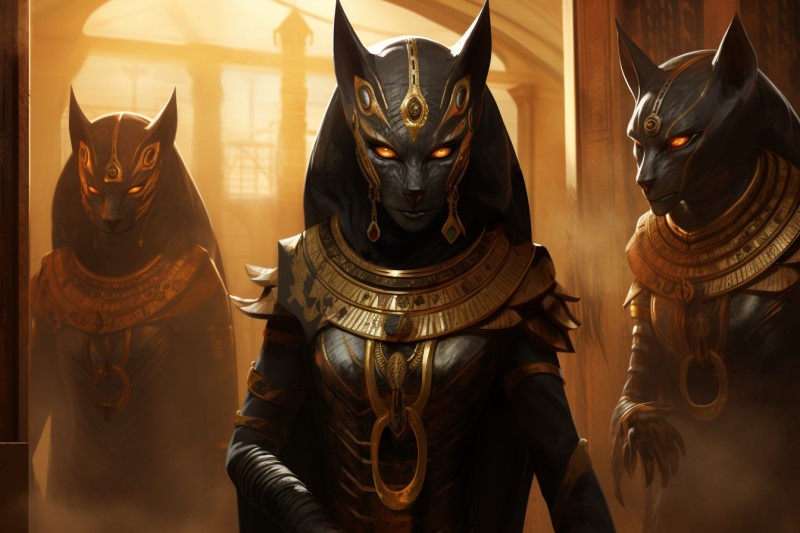KidZone Mythology:
Teaching Egyptian Mythology
Teaching Egyptian mythology to children opens the door to an ancient world filled with gods and goddesses, pharaohs, and mystical creatures, all set against the backdrop of the Nile River and the pyramids. Egyptian mythology is rich with stories of creation, magic, and the afterlife, offering a unique cultural perspective and a wealth of educational opportunities. This guide provides strategies for introducing the captivating tales of Egyptian mythology in a way that engages young learners and enriches their understanding of ancient civilizations.

The Magic of Egyptian Mythology
Egyptian mythology is distinguished by its gods and goddesses, who were deeply intertwined with elements of nature and the daily lives of the ancient Egyptians. The myths are filled with tales of divine power, intricate relationships among the deities, and the importance of the afterlife, making them a fascinating subject for children.
Story of the Shipwrecked Sailor
Introducing the Pantheon
Start by introducing the pantheon of Egyptian gods and goddesses, focusing on their attributes, symbols, and roles in mythology. For younger children (ages 6-8), stories like the sun god Ra's journey across the sky or Isis's quest to resurrect Osiris can be particularly engaging. Use visuals, such as illustrations and statues, to help children remember the deities and their characteristics. For older children (ages 9-12), delve into more complex narratives, such as the Osiris myth, exploring themes of loyalty, betrayal, and the cycle of life and death.
Egyptian pantheon coloring pages
Creative Expression through Art and Writing
Egyptian mythology is visually rich, making it ideal for art-based projects. Encourage children to create their own hieroglyphics or draw scenes from their favorite myths. Activities like making masks of Anubis or crafting amulets can also bring the mythology to life. Writing assignments can include creating a diary entry from the perspective of a pharaoh or writing a short story inspired by a myth.
Exploring Themes and Morals
Egyptian myths are ripe with themes such as the power of magic, the significance of the afterlife, and the value of wisdom and knowledge. Use these stories as opportunities to discuss these themes and the moral lessons they may impart, such as the importance of perseverance (as seen in Isis's search for Osiris) and the consequences of jealousy (as seen in the rivalry between Horus and Set).
Connecting to History and Geography
Link the myths to the history and geography of ancient Egypt to provide a deeper context. Discuss how the Nile River influenced Egyptian life and religion, and how the pyramids and tombs reflect the Egyptian belief in the afterlife. This can extend to lessons on mummification, the construction of pyramids, and the significance of the pharaohs.
Multimedia Resources
Utilize multimedia resources to enhance the learning experience. Documentaries, virtual museum tours, and interactive websites can provide a closer look at Egyptian artifacts, temples, and hieroglyphics. Animated stories or video games based on Egyptian mythology can also make the subject more engaging for children.
Comparative Mythology
Encourage students to compare Egyptian mythology with the myths of other cultures, such as Greek or Norse mythology. This not only highlights the unique aspects of Egyptian myths but also encourages children to see the universal themes and archetypes that run through different cultures' mythologies.
Hands-on Learning Activities
Incorporate hands-on activities such as building mini-pyramids, creating a map of ancient Egypt, or simulating the mummification process with a doll or a fruit. These activities provide a tactile connection to the material, making the mythology and culture of ancient Egypt more tangible.
Egyptian Mythology Challenge Cards
Encouraging Critical Thinking
Pose questions that encourage critical thinking about the myths, such as "Why were the gods so important to the ancient Egyptians?" or "How do the values reflected in these myths compare to our values today?" This stimulates deeper engagement with the material and helps children develop analytical skills.
Conclusion
Teaching Egyptian mythology to children not only entertains but also educates, offering insights into ancient Egyptian culture, religion, and worldview. By using storytelling, creative projects, and interactive activities, educators and homeschooling parents can create a captivating learning experience that enriches children's understanding of the ancient world. Egyptian mythology, with its timeless appeal and rich narratives, provides a unique lens through which to explore the mysteries of the past and the universal themes that connect us across time and culture.